Link building is one of the most important things you can do in terms of off-site search engine optimization. As you probably know by now, search engines like Google tend to rank pages higher in search results based on the number and quality of links to those pages. Essentially, the more links you have, the more likely you will be to rank well when someone searches for keywords related to your website. Some of the most common ways to build links to a website include the following:
- Link Requests – This is where you simply ask another website owner to link back to your website. These are really hit or miss and depend on how well you can convince the website owner that your link on their website is beneficial to both them and their visitors.
- Link Buying – This is the big no-no, yet it is still happening. Instead of politely requesting a link from a website owner, you approach them with a deal instead. Some consider it as advertising in the form of a link instead of a banner, but Google considers it a good reason to penalize a website.
- Directories – There are a ton of directories out there – general directories, local directories, and niche based directories. Some will allow you to create a listing for free while others will charge a fee. The latter doesn’t constitute “bad link buying” even though you are paying for the link.
- Content Links – There are a lot of ways to build links via content, from creating articles on article marketing networks to guest blogging with a link in your author bio.
- Social Links – I’m not just talking about links in your social profiles (although we will get to those). This refers to all of the ways getting social online (blog comments, forum posting, answering questions, and using social media) can lead to links.
For this post, we’re not going to focus on the first three (requests, buying, or directories) but rather, the last two – content and social. Why? Because chances are you are already doing most of these right now, or know you should be!
The reason these two are so important is that they are not just about creating links for SEO value (although some will have some SEO value anyway). They are about creating links that people will be likely to click on, so instead of waiting for clicks and conversions from higher rankings in search results, you could be getting both immediately from the link itself!
Linking with Content
Creating content is a great way to gain valuable backlinks to your website while also demonstrating expertise in your industry. There are three ways you can go about getting links from other websites besides your own blog where you should have great content as well.
Guest Blogging
Guest blogging is a great way to get your name, company, and link in front of a new audience. Once you have some good content on your own blog to show as a sample of your writing, you can start reaching out to other blogs in your industry whose audience members could be potential clients. As you have success with smaller blogs in your industry (success being posts with a good amount of social engagement and comments), you can use these as examples to present to larger blogs in your industry.
Some link building tips for guest blogging include the following:
- Don’t think of guest blogging as solely a link building exercise. Think about it as a way to position yourself or your brand as an authority in your niche and a way to drive visitors back to your site. With that in mind, create awesome content that fits the blog and its audience.
- Read other guest posts on the blog first. Look at how they format their posts and follow accordingly.
- When it comes down to the links, you will most likely be adding them through an author bio. Look at other guest bloggers’ bios to see how many links you can have and what they should be to (your website, your blog, and/or your social networks).
- Make sure the keyword phrase and page you link to in your author bio is appealing to the blog’s audience to maximize the number of potential clicks.
Article Marketing
Many popular article marketing sites like EzineArticles took a huge hit when the Google Panda update came out. Since then, they have been working to update their networks to focus more on quality than letting everyone get away with quantity. Still, it is unsure how much real value comes through link building through article marketing on those sites.
My suggestion would be to look for article communities (not just directories, but real communities) whose audiences fit your target demographic. And when I say community, I mean sites like HubPages and Squidoo where members can connect with other members through private messaging, commenting on their profiles / articles, or even hanging out in forums. This way you can find other members in your industry or members who would make good potential clients, engage with them, and ultimately drive them to your articles and websites.
Also, on any article marketing network, be sure to take advantage of filling out your profile and (of course) including your links.
This way, if you are engaging with someone on the network, they can get to know you and click through to your website without even needing to get to one of your articles!
Videos
Another great type of content to build links with is video. Most video networks (YouTube and Vimeo are my favorites) will allow you to add a link in the description of your video.
This means that if someone comes across your videos through search or on YouTube itself, they will be able to go directly to your website. So your videos, like your written content, should be informative and geared to draw in the right type of audience for your business.
Remember that video doesn’t have to mean anything to crazy (or anything that even puts you behind the camera). You can turn PowerPoint presentations into movie files, you can upload previously recorded webinars, or you can use screencasting software to do a video tutorial with a recording of your voice and your computer screen. All of these options make for great video content!
Linking with Social Profiles
If you are participating in social media, then you are likely sitting on several properties that could hold anywhere from one or more links. Let’s look at which ones you can put your links in, where, and their impact.
Twitter allows you two places to put links – the Web and Bio field of your profile. To edit your profile, go to Twitter and use the dropdown to find your Settings. Then edit your profile to include a link in the Web and Bio field. You will have two links in your profile like this.
How does this work towards link building? There are a lot of other sites that will pull your Twitter profile information and use either just your bio information or your bio and web link. Having a link in both means you are covered either way in getting more links to your websites.
Klout, for example, pulls your bio information and automatically hyperlinks any web links.
Listorious, on the other hand, pulls in your bio and web link, but only hyperlinks the web link.
While Facebook doesn’t have so many sites pulling your user information, your Facebook page does have a lot of spots where you can sneak in a live hyperlink.
These will help visitors to your fan page see your other social properties, blogs, and websites. Try to use the shortest links possible, but at the same time, don’t go for just bit.ly or other shortened links as those are often used by social spammers to get unwilling visitors to click on shady links. Bit.ly does work well if you want to shorten a Facebook or LinkedIn profile as it will use their custom short domains, on.fb.me and linkd.in which only go to those sites.
LinkedIn allows you to have three links in your profile, each with customized anchor text (although they don’t count for SEO value). Think of the anchor text as a way to entice visitors to click on the links. To edit your websites, click on Edit Profile under the Profile dropdown menu. Then click on the Edit link next to your website links. Be sure to use the Other option in each dropdown to get the customized anchor text.
This will give you three great links which visitors to your profile should want to click upon.
Google+ Personal Profile
Google+ gives you the opportunity to add a huge number of links. Try not to make it look spammy, but be sure to take advantage. To add links, go to your Google+ profile’s About tab and click the Edit Profile button. Then click on the Other profiles, Contributor to, Recommended link, and Introduction sections to edit them. In each of these, you can enter links to your websites (and pages within them) with custom anchor text.
Be sure to note that the following links should be of a specific type.
- Other profiles – These links should be to pages that are about you, such as your about page on a blog or website and other social profiles.
- Contributor to – These links should be to your own author pages for who write for, such as your own blogs, blogs you contribute to, or other major sites you contribute to.
- Recommended link – These links can be to any other website you choose.
You can create the same kinds of links on your Google+ pages as well, with the exception that you will only have the option for Recommended links in the right sidebar.
YouTube
Thanks to the new YouTube channel design, you can have more than one link to your other websites near the top of your channel profile. To edit the new channel design for adding links, click on the Edit button next to the About section. Then add the Title (custom anchor text) and URL for each link.
When finished, it should look like this.
While the downside is that these links are nofollow (or otherwise ignored by search engines), the upside is you can add more of them for visitors to click upon!
UTM Parameters
Want to check the number of clicks on these links? You can if you use UTM parameters for the links on LinkedIn, Google+, and YouTube. I wouldn’t suggest them for Twitter and Facebook as both display the entire URL, and URL’s with UTM parameters can get ugly and lengthy.
Linking with Engagement
Engagement with communities in your niche / industry will help you build your personal, professional, and business brand. The following are ways to incorporate link building with your engagement in order to get the best of both worlds.
Blog Commenting
Whenever you start blog commenting, be sure that you are commenting on posts because you want to say something important, not just because you want to leave a link. If you do it because you have something to say, your comment will make an impression which will lead others to become curious about you. That curiosity will equal clicks on your link! Pointers for making people want to click on your link in blog comments (besides just filling in the Website / URL input box on the form) include the following.
- Get a Gravatar. Using the email that you most often comment with, sign up for an account and associate a photo with every email address you comment with. This will ensure that a photo comes up next to your comment on most blogs using WordPress, and will help blog owners tell the spam from the legit comments. Because as a blog owner, I almost never approve a comment without a Gravatar unless I recognize the person’s name.
- Always use your real name in the name field of comments. The only exception is WordPress blogs that use the KeywordLuv plugin. You will know these because somewhere near the comment form, there will be instructions to use Your [email protected] Keywords in the name field so your website is linked up to your specified anchor text. This means you still include your real name with your comment!
- Look for blogs with CommentLuv – search CommentLuv keyword on Google to find them. Whenever you comment on a blog with the CommentLuv plugin, you will get an additional link to your latest blog post beneath your comment when you enter a blog URL in the website field of the comment form.
- If a blog is using a third-party system like Disqus, sign up for a profile so you can include your website link and your photo with your comments. You’ll also receive a link from your profiles on those networks as well as a way to keep track of your commenting history (see this profile on Disqus for example).
Forums
Forums can be a bit tricky in terms of getting links. Some communities embrace it, while others will call out anyone adding a link back to their own site as a spammer. You can find great forums in your industry by searching BoardReader or “powered by vbulletin” keyword in Google. Once you’ve found these forums, go to a public post to see if the forum users are allowed signatures. They will be at the bottom of each post.
Unless you happen to know everyone in the forum (because it’s new or you are the owner of it), I would suggest making some posts within the forum before adding your signature links. Once you’ve had some recognition as a valuable member of the community (maybe 15 to 20 posts, preferably not in one day), then go into your forum profile and add your signature. If everyone else only seems to have one link in theirs, just include one in yours. If people have three, go with three. Once you’ve posted a bit in the community, you’ll get to know what works best.
Also, be sure (as with any other site) that you fill out your member profile completely. This will usually include at least one spot to put a link, and it will help other members get to know you.
Q&A Networks
Question and Answer networks are great places to build your authority and drop the occasional link as part of an answer to a question. The top Q&A networks – Quora, LinkedIn Answers, and Yahoo Answers – all have a resource box where you can add links as a reference to your answer, or a place to look for additional details. This is when it is handy to have a blog because your blog posts will make better answers than a product link. The latter will probably get you labeled as a spammer unless the question specifically says “Where can I buy…” and you happen to have it for sale on your website.
As far as profiles go on these networks, Yahoo Answers doesn’t offer one where you can add links. Quora, on the other hand, is one where you will want to make sure you fill it out as much as possible. You can have links in your main bio.
You can also have links as a part of the topics you follow. When you follow a topic, it will ask you to describe your experience with that topic. In that area, just add a short blurb with your link.
Whenever you answer a question within that topic, it will put your link with your answer as a part of your topic bio.
Unfortunately, it’s not hyperlinked, but it could still lead the way to people going to your website from your answer, even if it is by copying and pasting.
Bonus Tips
I decided to do a few bonus tips that are unrelated to content or social engagement, but are also easy ways to generate more links to your site naturally.
Link to Us Page
The first bonus tip is to simply add something to your website that helps others link to you easily. Call it your Link to Us page and be sure it includes the following.
Badges & banners are just simple images that people can use on their website. If possible, create them in a number of different sizes that are standard so people can find the right one to fit their site. 125×125, 468×80, and 300×250 are pretty standard banner sizes.
Along with your badges & banners, be sure to include the HTML code that people can use to put your link on their site as shown in the example above. The easier you make it, the most likely people will link to you.
Widgets
Can you think of a simple widget that fits with your website? If so, create a widget that people can place on their website. And make sure that widget has a link on it!
See WidgetBox for more examples and learn how to create your own.
Email Links
Do you send out a lot of emails? Do you use an online email service like Hotmail, Gmail, AOL, or Yahoo? If so, use WiseStamp to create visually appealing email signatures with links to your websites, or simply include links to your websites below your name.
I have had several people click on these links in my signature, then email me back saying they didn’t know I did freelance writing, blogging, or photography. After visiting my site, they wanted to inquire about services or prints of photos!
Statistics Checking Links
Want to see some interesting stats about your website (or someone else’s) while building some quick links to it? Try searching for your domain using the following sites. They will tell you some useful information as well as create a profile page for your domain with a link back to it.
- Alexa – This site will tell you how your domain ranks in traffic worldwide and within your own country. It also gives you additional details including the number of sites linking to yours, top queries for your website, and additional statistics.
- Built With Technology Profiles – This site will tell you what your domain is using on their website including content management systems, analytics, frameworks, server information, and more.
- Quarkbase – This site will give you the latest Twitter comments associated with your domain, traffic stats, and social stats. For blogs, it will even pull up the most recent and popular blog posts!
- About the Domain – This site will tell you basic SEO information of your domain like the title, meta description, headers, incoming links, and even the Google Analytics ID #.
- Similar Site Search – This site will tell you sites it thinks is similar to yours based on keywords and content.
Have you seen success in natural link building through content, social media, and engagement? What other natural link building activities would you suggest for websites looking to gain exposure?
About the Author: Kristi Hines is a freelance writer, blogger, and social media enthusiast. Her blog Kikolani focuses on blog marketing, including social networking strategies and blogging tips.
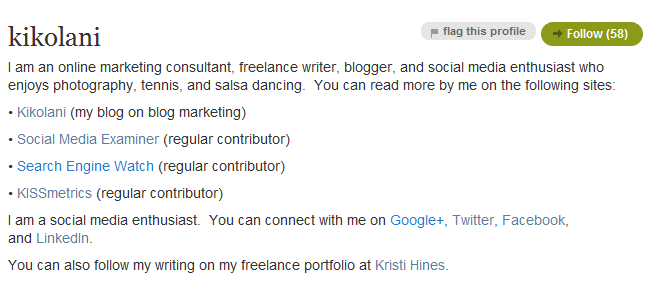
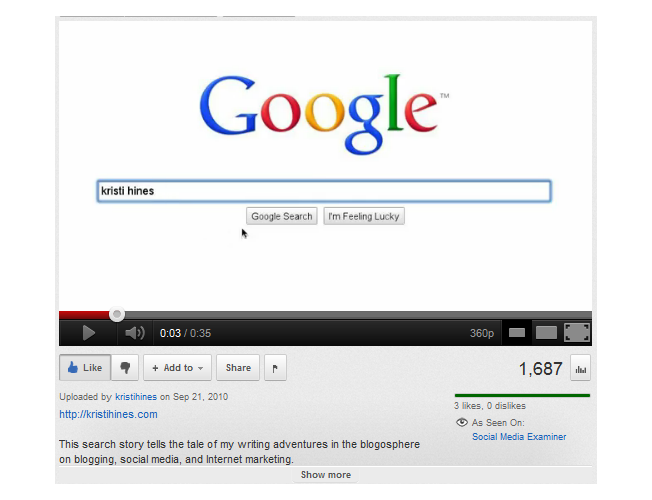



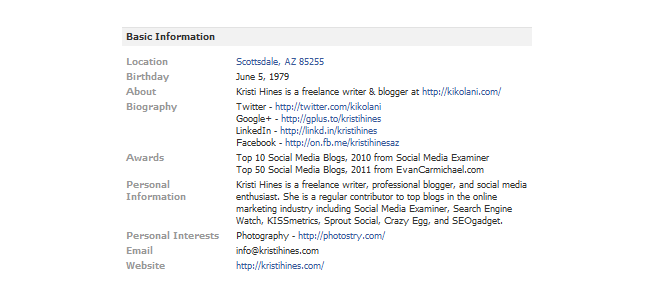

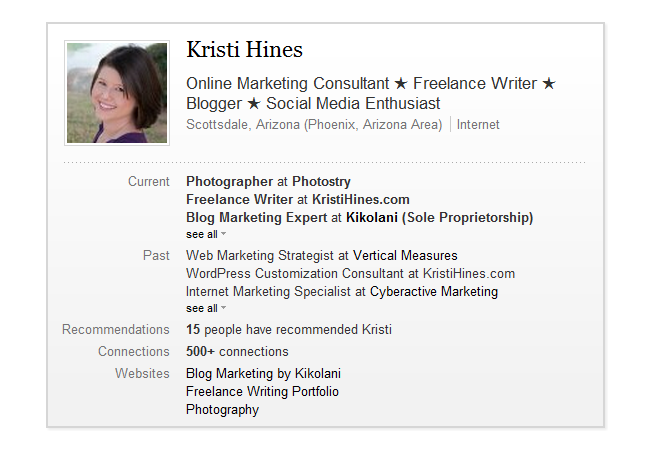

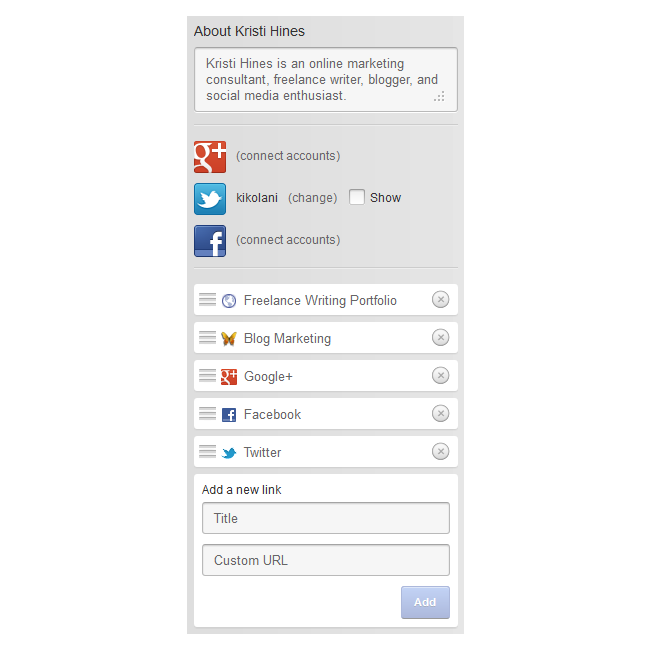

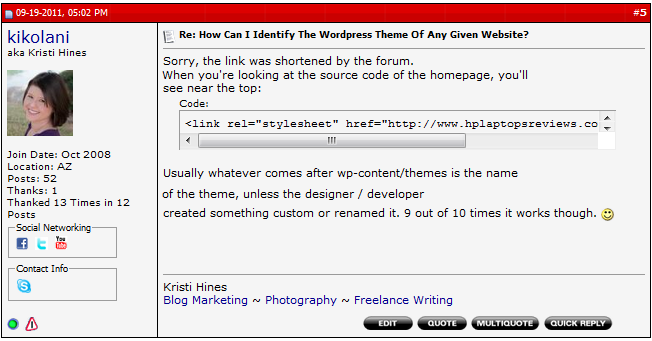

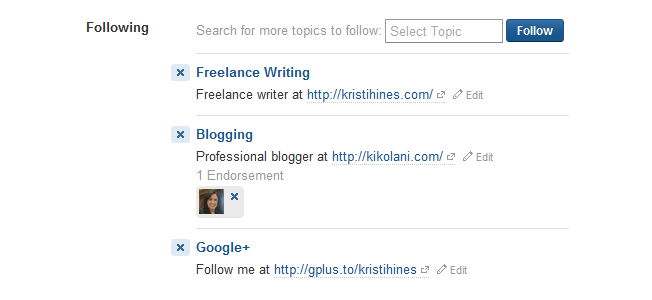


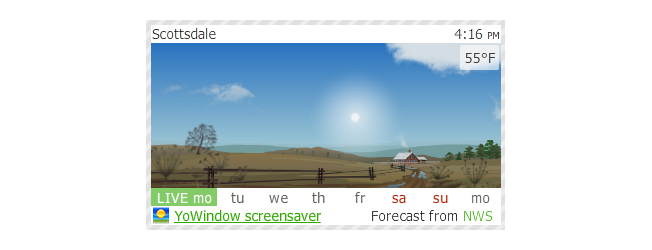

Comments (59)